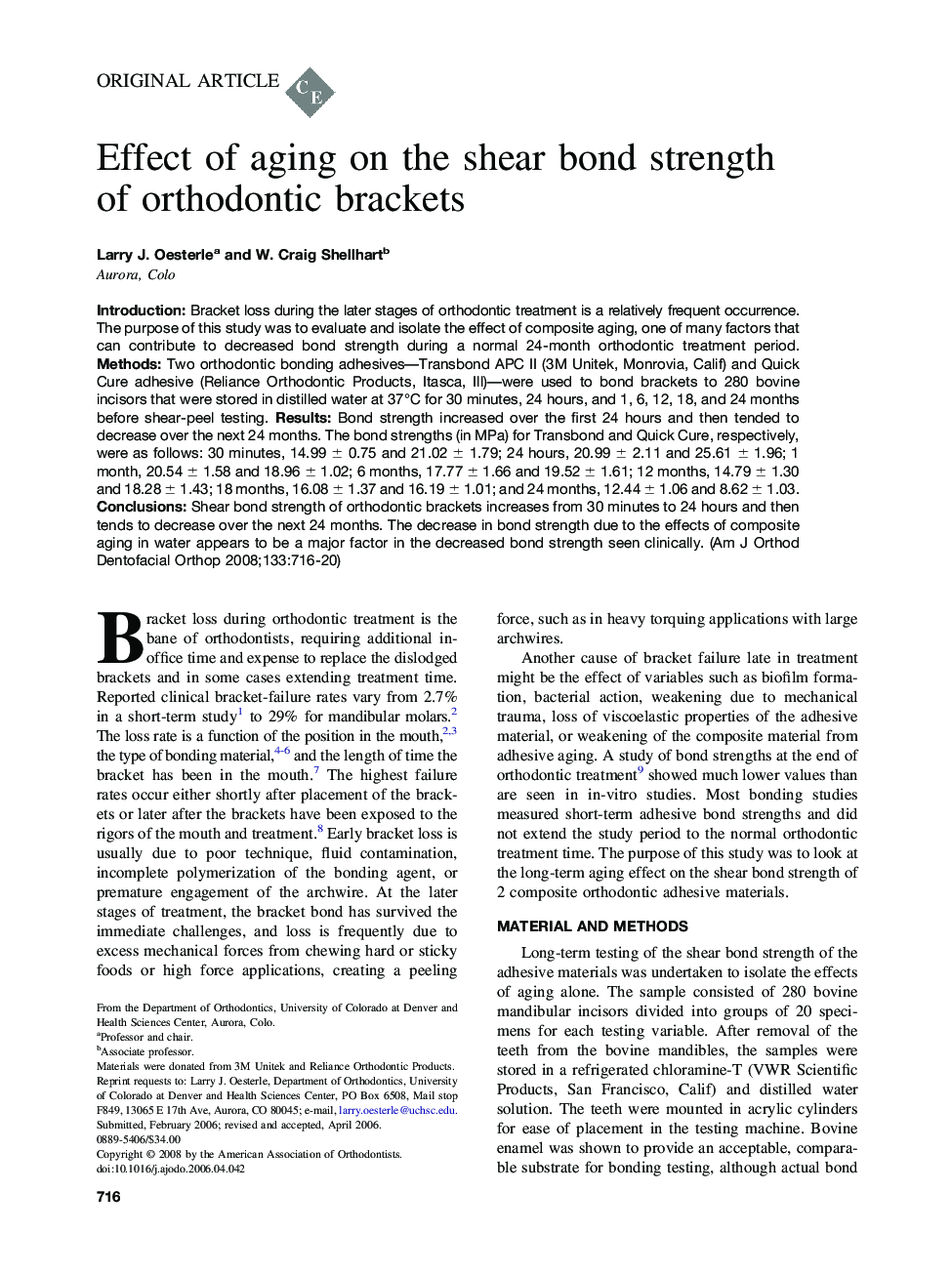| Article ID | Journal | Published Year | Pages | File Type |
|---|---|---|---|---|
| 3120240 | American Journal of Orthodontics and Dentofacial Orthopedics | 2008 | 5 Pages |
Introduction: Bracket loss during the later stages of orthodontic treatment is a relatively frequent occurrence. The purpose of this study was to evaluate and isolate the effect of composite aging, one of many factors that can contribute to decreased bond strength during a normal 24-month orthodontic treatment period. Methods: Two orthodontic bonding adhesives—Transbond APC II (3M Unitek, Monrovia, Calif) and Quick Cure adhesive (Reliance Orthodontic Products, Itasca, Ill)—were used to bond brackets to 280 bovine incisors that were stored in distilled water at 37°C for 30 minutes, 24 hours, and 1, 6, 12, 18, and 24 months before shear-peel testing. Results: Bond strength increased over the first 24 hours and then tended to decrease over the next 24 months. The bond strengths (in MPa) for Transbond and Quick Cure, respectively, were as follows: 30 minutes, 14.99 ± 0.75 and 21.02 ± 1.79; 24 hours, 20.99 ± 2.11 and 25.61 ± 1.96; 1 month, 20.54 ± 1.58 and 18.96 ± 1.02; 6 months, 17.77 ± 1.66 and 19.52 ± 1.61; 12 months, 14.79 ± 1.30 and 18.28 ± 1.43; 18 months, 16.08 ± 1.37 and 16.19 ± 1.01; and 24 months, 12.44 ± 1.06 and 8.62 ± 1.03. Conclusions: Shear bond strength of orthodontic brackets increases from 30 minutes to 24 hours and then tends to decrease over the next 24 months. The decrease in bond strength due to the effects of composite aging in water appears to be a major factor in the decreased bond strength seen clinically.
